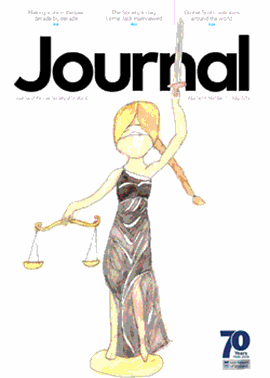
BLACKSTONE'S EMPLOYMENT LAW PRACTICE: 4TH EDITION
(Ed) John Bowers and others
PUBLISHER: BLACKSTONE
ISBN: 0 19 955661 8
PRICE: £65.99
A perennial complaint of the hard pressed employment practitioner is the need to lug around a variety of reference books and materials when attending hearings.
For many reasons, not least the practitioner’s back, the fourth edition of Blackstone’s Employment Law Practice will prove a valuable resource to anyone, whether legally qualified or not, who advises and represents clients on employment-related issues. In one portable volume the authors have produced a practical and clearly set out guide to raising and fighting claims in the employment tribunals and higher courts.
The book covers almost everything one needs to know about practice and procedure in the employment tribunal and the employment appeal tribunal, and ventures into more esoteric areas including higher (English) court procedures and references to the European Court of Justice, among others. Of particular practical use are the sections dealing with compromise agreements and the tax treatment of termination payments, including an example style compromise agreement with drafting notes. Practical guidance is also included in relation to the issues that frequently arise in tribunal hearings in relation to calculation of awards and assessment of damages.
Practitioners will also benefit from the appendices which include extracts from selected legislation, practice directions, codes of practice, summaries of the main cases frequently referred to in hearings
and, more unusually, financial information (for example motoring costs guides) that will assist in calculating loss at hearing.
While the majority of the text is concerned with tribunal and other courts’ procedures (including remedies available), the book also addresses the substantive law in the areas most likely to arise at tribunal, including dismissal, redundancy, discrimination, equal pay, unlawful deductions and the transfer of undertakings. The authors do not claim to cover the substantive law in great detail, but these sections contain a useful summary of the main legal and practical issues.
Tolley’s Employment Law Handbook, currently in its 22nd edition, takes the opposite approach to Blackstone’s, and is primarily designed as a reference book dealing with the substantive law, rather than a guide for practitioners in the tribunal. Tolley’s is stronger on black letter law, though in practice, for the up-to-date legal position, practitioners are likely to refer to Harvey on Industrial Relations & Employment Law, or IDS online.
Where appropriate, Blackstone’s highlights the differences in legislation between Scotland and England, though less attention is paid to the differences in the practice of tribunals north and south of the border in respect of matters including the use of witness statements (rare in Scotland but common practice elsewhere), the order of closing submissions, and the provision of skeleton arguments before the EAT (again not normal practice in Scotland).
The law is up to date as at January 2009. In an area of law that is subject to as frequent change as employment law, such volumes can quickly become out of date. It is promised that the book will be updated annually.
In summary, although the book would have been stronger if it had cross-referenced the main text with the relevant cases summarised in the appendices, it is well presented and thorough, and will prove a useful aid to tribunal practitioners.
Donald MacKinnon, Law at Work
Criminal Procedure (Scotland) Act 1995: 8th edition
Dr Robert Shiels and others
PUBLISHER: W GREEN
ISBN: 0 414 01759 7
PRICE: £82
This text provides both the annotated statute and the criminal procedure rules. The fact that the text is in its eighth edition is testament to the scholarly, concise and up-to-date annotations undertaken by four renowned experts in the field of criminal law.
Editions of annotated statutes are generally seen as not being a substitute for textbooks on the chosen area. While this is equally true in criminal procedure, the annotations to this statute are so clear and readable that they provide an excellent grounding for understanding the statute and its increasing number of sections (eight pieces of new legislation are taken into account in this edition) and their complexity.
We were all taught that anyone appearing in court ought to have with them, any statute they intend to refer to. This text is an absolute must for anyone who practises before the criminal courts.
David J Dickson
Suggestions for future books The Book Review Editor is David J Dickson. Books for review should be sent c/o The Law Society of Scotland, 26 Drumsheugh Gardens, Edinburgh EH3 7YR
In this issue
- Home reports have devastated the Scottish house market
- Review of the Fatal Accident Inquiry Legislation
- The Gill Review: a personal injury practitioner’s perspective
- A tale for our times
- A step too far?
- Report card
- Down the slipway
- Homing instinct
- Bottle for a contest
- Ready for the VAT rise?
- New website to promote training openings
- First solicitor advocates approved as "senior"
- Your feedback
- The very definition of paralegal
- Law reform update
- Lawyers can network too
- Ask Ash
- Welcome, user! (and you're sued)
- Communication, communication, communication
- Keeping the peace
- On the mark?
- Crown disclosure: the next level
- Tackling improvements
- Camera angles
- Cutting red tape in Europe
- Scottish Solicitors' Discipline Tribunal
- Website review
- Book reviews
- Calling the shots
- Sector "rising to challenge": Millar
- "One size" is a dodgy fit
- BSA brings in standard instructions
- A new burden is born







